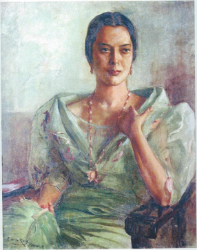When my Ilocano father introduced me to Basi, it came with the warning that Ilocanos are serious about their liquor. I thought he was joking, dismissing it as his excuse to drink. He described its flavor as vinegary, like sukang Ilocos. Little did I realize just how integral Basi – a native wine made from fermented sugar cane – is to the identity of Ilocanos. The drink played an integral part in traditional Ilocano cultural rites long before Spanish colonizers arrived in Northern Luzon. Basi was also at the center of what came to be one of the most defining moments of Ilocano history.
The Basi Revolt of 1807 began in the town of Piddig in Ilocos Norte, considered the production hub of Basi. The revolt was the result of frustration and discontent over a twenty-five-year-long monopoly the Spanish colonial government exercised over the production and sale of Basi. Spilling over into violence, the revolt lasted thirteen days, ultimately ending in tragedy when the insurgents were eventually outgunned and massacred along the Bantaoay River.
Fourteen years later, the Spanish commissioned Esteban Pichay Villanueva, a simple farmer with no artistic background, to depict the Basi Revolt of 1807 in a series of fourteen panel paintings showing how the insurgents were dealt with. His works illustrated Ilocano insurgents retreating en masse while being attacked by a superior Spanish force.
I was able to see these paintings at the National Museum in Manila in 2014. The works were deeply unsettling—my perception of the Ilocanos’ bravery completely shaken. In this day and age when something as simple as Basi is readily available, it is unthinkable for a whole town to wage war over wine.
To balance this skewed depiction, the province of Ilocos Norte commissioned social realist artist Antipas Delotavo to create a mural that emphasizes Ilocano bravery in the face of overwhelming odds. It was displayed in an exhibit titled Agos at the Vargas Museum of the University of the Philippines (UP), along with two oil-on-canvas paintings and an installation, which aimed to augment the message of the mural.
The mural itself, “Agos ng Ilog Bantaoy,” depicts figurations of Ilocano insurgents rushing into battle as its most prominent feature. Every aspect of the mural reveals the Ilocanos’ love for freedom. Standing out is the figure of a pregnant woman in the foreground, who joins the surge while trying to hide her bulging belly—her involvement stressing the nature of the revolt as a collective action that involved all Ilocanos. The prophetic appearance of Halley’s Comet is also included – an element that appears in Villanueva’s paintings – signifying a coming revolt as the Basi Revolt would spark of a series of uprisings in its aftermath.
The mural is a “highly mediated work,” said Dr. Patrick Flores at the roundtable discussion held at the UP Vargas Museum. Delotavo’s approved draft studies of the mural had a subdued implication that merely showed fallen insurgents at the frontline. However, I found Delotavo’s final artwork, depicting the Bantaoay River running red with blood, successful in illustrating the scale of the massacre in a manner that was consistent with field research—the Bantaoay River is known in Piddig as the “river of blood.”
The installation “Via Crucis” is a reactionary piece recalling the Stations of the Cross. It is an oil-on-canvas work that depicts a blank central area surrounded by an industrial landscape populated by morose people. The purity of the center is touched by the symbolism of a butterfly, which pertains to the Christian belief in resurrection. The foot of the painting gives an illusion of extending onto the floor.
Placed on each side of the painting are Inabel blankets covering what looks like fourteen bodies, seven on each side. Inabel is a kind of textile native to Ilocos. The entire installation is reminiscent of a church, with the painting as the altar and the Inabel-covered bodies as the pews. The eerie vision of bodies wrapped in blankets, while memorializing the insurgents of the Basi Revolt, also brings to mind recent events such as Typhoon Yolanda or the Mamasapano Massacre—events that have uncanny parallels to what happened in Piddig more than two hundred years ago.
Dr. Vic Villan of UP’s Department of History, pointed out that “the way history is taught is very Manila-centric.” This explains how an event contained in Northern Luzon, while having repercussions in the development of the larger Philippine nation, can be thought of as a merely localized Ilocano insurgency—and thus irrelevant in the national narrative. It highlights how regionalism has stymied our understanding of history and events such as the Basi Revolt. To mirror this sentiment, Delotavo mimics the disconnection between Manileños and the Basi Revolt by contrasting the past and the present through the oil-on-canvas paintings “Ganito Noon” and “Ganito Ngayon”.
The paintings show two groups of people dressed in period and contemporary clothing respectively. In “Ganito Noon,” the group’s attention is directed towards the viewer, and in “Ganito Ngayon,” the figures are engaged in their own affairs. Both works have a character in its foreground giving a questioning look, as if to ask where the viewer stands in their review of history.
Delotavo considers the project useful in educating people about local history. “Para sa akin, walang katapusan ang pag-aaral ng kasaysayan, tsaka hindi ako nagsisi na may pagkakataon akong gumawa ng Basi Revolt kasi nakapagpayaman ito sa kaluluwa ko bilang Pilipino,“ he said. (For me, learning about history never ends. I don’t regret getting the opportunity to paint the Basi Revolt because it enriched my soul as a Filipino.)
Hopefully, the mural’s eventual placement at the Museo ng Ilocos in Laoag, Ilocos Norte will serve as an introduction to an important and misunderstood piece of Philippine history that is linked to the development of our national consciousness. Who would’ve thought such an innocuous drink would be so pivotal to our sense of identity and nationhood?






